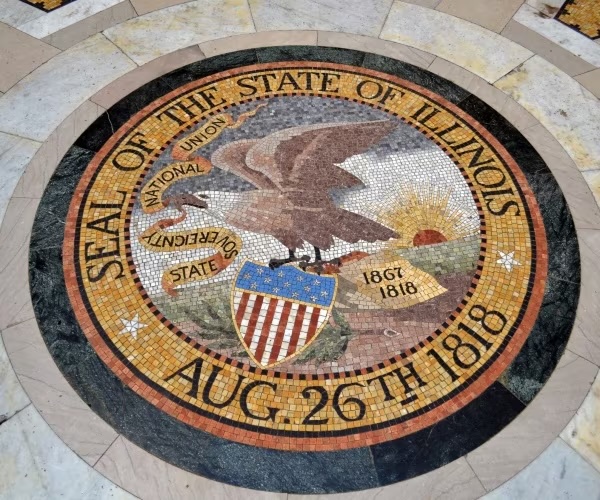By John F. Di Leo, Opinion Contributor
It’s a presidential election year. Time to talk numbers.
It is said that the United States National Debt – that is, the total debt owed by the federal government for past overspending – is now over $34 trillion.
That’s bad.
Federal tax revenue – that’s all kinds, from import duties to corporate and personal income taxes – every year is about $4.5 trillion. Of that, we pay about $400 billion in interest on the national debt. That’s only about one percent of the total national debt, or about 7 to 10 percent of federal revenues (why such a range? It depends on what you count as federal revenue, since so much is “off book”).
On the one hand, that’s not bad because one percent should be almost painless. On the other hand, it’s awful, because it means we’re really not even trying to pay it off. When you have a debt, you don’t address one percent of it every year, you work to knock down ten or twenty or thirty percent of it every year, so that you can eliminate that massive weight hanging over your head.
And when just one percent of the debt is ten percent of your income, you’re doomed.
But it’s worse than that.
The national debt isn’t some huge number that we’re gradually paying off. It’s a huge number that we’re not paying off at all.
We are only paying interest on it; we aren’t even trying to reduce the principal. By making only interest payments, we aren’t even making a dent in it; the national debt has become a permanent fixture, permanently chewing up seven to ten percent of our income, for nothing. We get nothing out of this spending, because it’s covering things that we bought years and years ago. Sometimes, years and years and years and years ago. The national debt has been around a very, very long time; we’re still paying bills that our ancestors racked up.
But it’s worse than that.
Every year, our federal government spends more than it takes in. That’s the national deficit.
(On a side note and going back to basics – before we go any further: the “national deficit” is the amount we overspend this year; the “national debt” is the total outstanding obligation, the total we’ve overspent during all these years of deficit after deficit, plus all that interest.)
To use current numbers as an estimate, we think the federal government spent about $7 trillion in 2023, but took in about $4.5 trillion. That means we had a deficit that year of over $1.5 trillion. Probably about $1.7 trillion, in fact. That’s four times the amount of interest we paid.
When you’re still borrowing, every year, more than four times what you’re paying in debt service – you guessed it: it means you’re not even trying. Our national debt is growing by trillions of dollars every year. It’s not getting better, it’s getting worse.
As we all know, as individuals, there are years when you have to spend more than you take in. When you buy a house, when you put your kids through college, when you buy a car. But these have to be the exceptions; you have to spend the rest of your years paying off those debts. You can’t spend like that every single year.
Similarly, we could understand if the federal government spent more than it took in during World Wars I and II, during the years when we had to build our nuclear arsenal and the years when we built the interstate system.
But every single year? We do this every year. If we’re overspending by $1.7 trillion in a year like 2023, we’re not even trying.
That’s bad. But it’s worse than that.
The fact is, the reported national debt – the huge total, currently over $34 trillion that the national debt clock tracks – is only a part of our real debt, because of unfunded obligations.
An unfunded obligation is a promise – one that can’t be broken – to pay something in the future, without having built up an investment to provide for it. If we have already sold a federal bond, that counts in the national debt. But if we pass laws in which we promise to pay medical costs for someone forty years from now, that’s just as real an obligation, but it’s not counted in the national debt.
We just don’t know how many medical costs, how many food stamps, how many college grants, how much housing assistance, the federal government is going to pay for in ten years, in twenty years, in fifty years. We just know that we’ve already written the laws to ensure that we will pay it, sight unseen, amounts unknown. The federal government writes more blank checks for the future than it does for the present, and it writes a lot of those too.
The current estimate of the total national debt, counting unfunded liabilities, is somewhere between $100 trillion and $200 trillion, depending on who you ask. These numbers have been around for quite a while, so it’s probably higher than that.
That’s bad. But it’s worse than that.
With all this going on, how could it be worse, you ask? Every year – no, every month – no, every day – Joe Biden and Kamala Harris, and Hakeem Jeffries and Chuck Schumer, in fact the Democratic Party itself – makes sure to let in more illegal immigrants over the border.
We have gatecrashers arriving hourly, mostly at the southern border, but not exclusively there. The millions of foreigners who arrive illegally every year, from Latin America, the Middle East, Africa and Asia – in fact, from everywhere on earth except Antarctica – are not “known” to the government statisticians.
This block of people, somewhere between thirty and fifty million over the past generation, increases our national debt as well, because we are obliged to take care of them somehow, unless we deport them.
Not knowing who’s here – being unable to tax their income, but still having to provide schools for their children, housing and food for their households, police and fire services when they have trouble, and welfare for them in their dotage – all adds up. If we were only talking about thousands of people, it would be a drop in the bucket of a massive modern economy. But tens of millions of illegals? It’s unfathomable.
Our nation was built by legal immigrants – from Great Britain and Holland, then from Germany and Ireland and Italy, and then from Africa and Asia and Latin America. This issue isn’t about legal immigrants; it has nothing to do with those who arrived legally.
The illegals cheat our recent legal immigrants just as much as they cheat our Mayflower descendants.
The off-books cost of these current illegals – from paying for their hotel bills and healthcare today, to covering the policing and incarceration costs of the crimes that accompany these groups – is crippling and unfathomable. We don’t know how many of them will get jobs, how many will be on welfare, how many will be leaders of organized (or unorganized) crime. We just know that for generations to come, this group will be a net drain.
There is no statistical way to calculate these numbers with any kind of accuracy. This engineered chaos, this intentional contamination of our economy with massive future obligations, has virtually rendered our economy unmanageable and irreparable. Our government cannot predict its future costs, and cannot even begin to return the country to a solid footing, until we tackle the immigration crisis.
We must close the borders. We must stop the bleeding first. And that’s the easy part.
Then we must do the really hard part: We must start the deportations. America has to start sending millions and millions of people home.
We have to fix our economy now, and as with any sinking ship, we must begin by plugging the leak and baling.
Some politicians propose “solving” this mess by raising tax rates (which just kills economic activity and makes things worse).
Some propose solving it by “monetizing” the debt (letting inflation reduce the value of the debt, while simultaneously reducing the value of all Americans’ savings accounts and retirement funds, a particularly pernicious approach).
In fact, the only way available to us, the only way that can truly work, is to grow our way out of it. We’ve done it before; a strong economy can produce the revenues necessary to finally chip away at the national debt again and reverse this fiscal death spiral, as long as we are disciplined enough to cut our wasteful ongoing government expenditures.
But it all begins with stanching the bleeding caused by the illegal masses and the unfunded mandates that their presence creates. This isn’t about bigotry, or racism, or cruelty. It’s just about math. They don’t belong here; they’re not here legally, we owe them no moral obligation.
And their very presence in our country is breaking us.
Copyright 2024 John F. Di Leo
John F. Di Leo is a Chicagoland-based trade compliance trainer and transportation manager, writer, and actor. Once a County Chairman of the Milwaukee County Republican Party in the 1990s, after serving as president of the Ethnic American Council in the 1980s, he has been writing regularly for Illinois Review since 2009. Follow John F. Di Leo on Facebook, Twitter, Gettr or TruthSocial.
A collection of John’s Illinois Review articles about vote fraud, “The Tales of Little Pavel,” and his 2021 political satirical discourses about current events, “Evening Soup with Basement Joe,” Volumes One, Two, and Three, are available in either paperback or eBook, only on Amazon.
Don’t miss an article! Register for Illinois Review’s free email notification service, so you always know when IR produces new content!
By Mark Vargas, Editor-in-ChiefOriginally published in NewsmaxConservative Republicans are facing a new threat in America as incident reports of "swatting" rise. This means lives are literally endangered; those...
Read moreDetails








